Era 1, 1200 to 1450 CE: Confucianism + Feudalism in Japan and Europe (Quizlet #7)
1/27
There's no tags or description
Looks like no tags are added yet.
Name | Mastery | Learn | Test | Matching | Spaced |
|---|
No study sessions yet.
28 Terms
1. Confucius 551 - 479 BCE
A Chinese philosopher who created one of the most influential philosophies in Chinese history. Confucius and Confucianism sought to create rules for relationships in society in order to create social harmony. Essentially, Confucius tried to make rules for how people should treat each other so that you would end up with a well-organized and happy society. Confucianism teaches:
-- filial piety, or honoring your parents and ancestors; in particular, obedience to older males in the family
--honor to farmers
--hatred of merchants, who were placed into the lowest social class
-Wrote "The Analects," which has all the most important rules of Confucianism, including "Ren" (treat others with kindness) and "Li" (behave morally and treat others with courtesy)
---emphasis on education, and being fair and wise. Confucianism was present in the Han Dynasty all the way through to modern China (with some changes along the way).
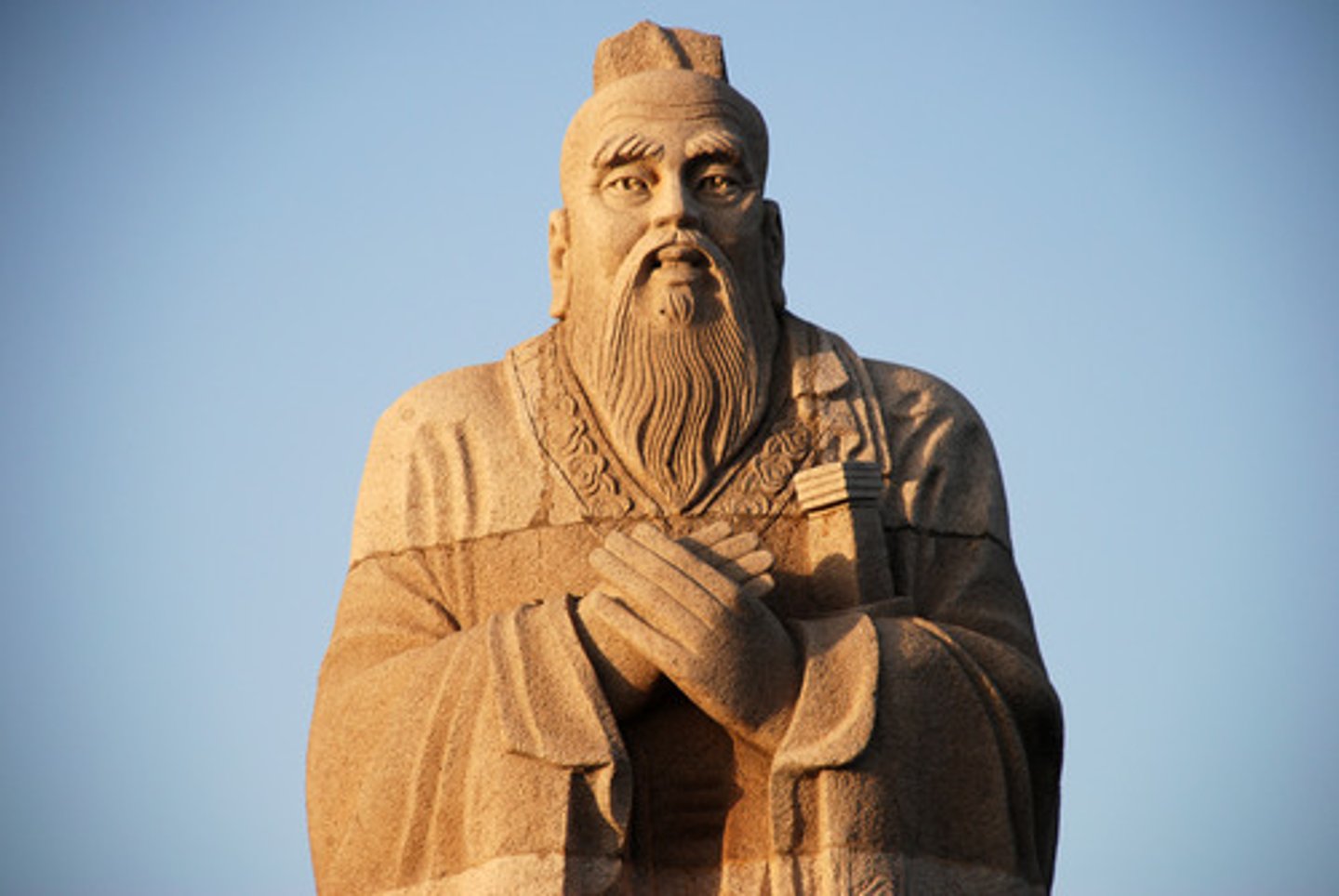
2. Confucianism's Effects on Song Dynasty
-Confucius was an ancient Chinese philosopher who created a set of rules and rituals for all Chinese people to follow
-Confucianism is kind of like a religion, but mostly the goal is to promote social harmony (rules for everyone in society to follow so that people get along and the society works well)
-Confucianism promotes social harmony by outlining proper rituals and social relationships for all people in China, including the rulers, who have to follow Confucianism
-In the Song Dynasty, Filial piety (obeying fathers and elder family members) and ancestor veneration (performing rituals to honor your ancestors) are a HUGE part of Confucianism
-The Analects are the central text of Confucianism; they are a book written by Confucius that stresses the rules and relationships that are important in Confucianism
-Confucianism calls for you to behave properly in your life towards others; REN stresses kindness towards people; LI stresses moral behavior and respect for elders
-Confucianism therefore affected the Song Dynasty as the rulers stressed to the followers the importance of respecting the rulers, following the rules, etc. Song Dynasty rulers also used Neo-Confucianism to emphasize obedience to the state, as well as to your elders
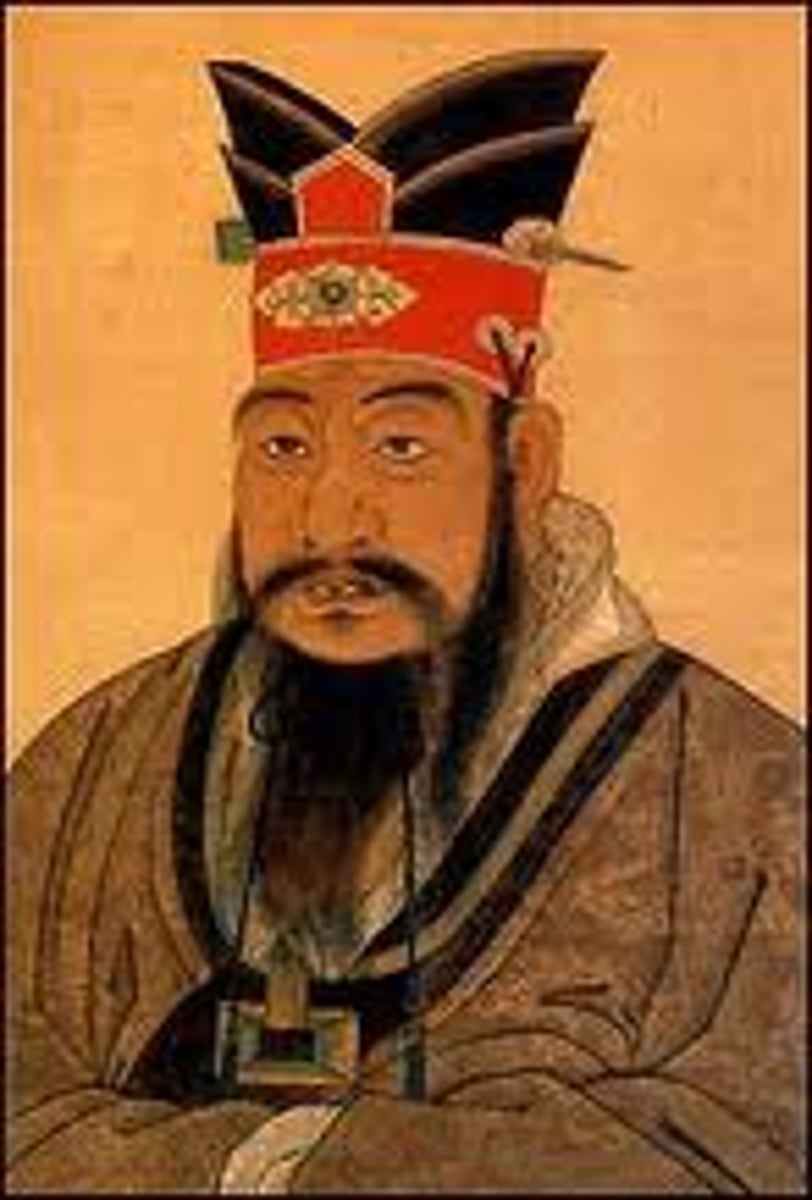
3. Analects
The book that Confucius wrote and that stresses the values and ideas of Confucianism.
- filial piety, or honoring your parents and ancestors;
--honor to farmers
--hatred of merchants
---emphasis on education, and being fair and wise.
Confucianism was present in the Han Dynasty all the way through to modern China (with some changes along the way).
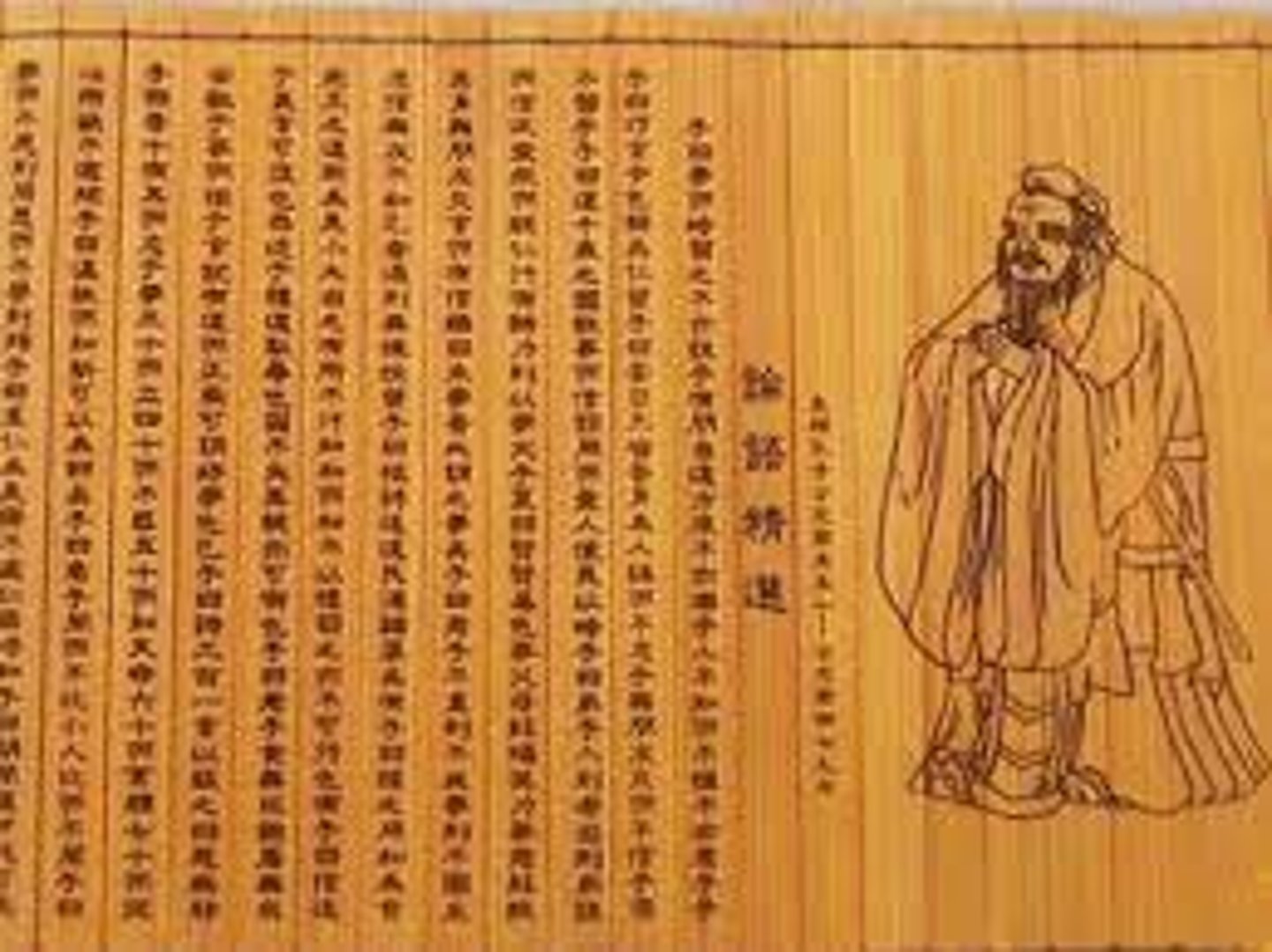
4. Ren
-Confucianism is all about promoting social harmony (a society with strong relationships between the people) and provides rules for everyone to follow in their social relationships
-This term tells you that you need to have an attitude of kindness and compassion towards other human beings
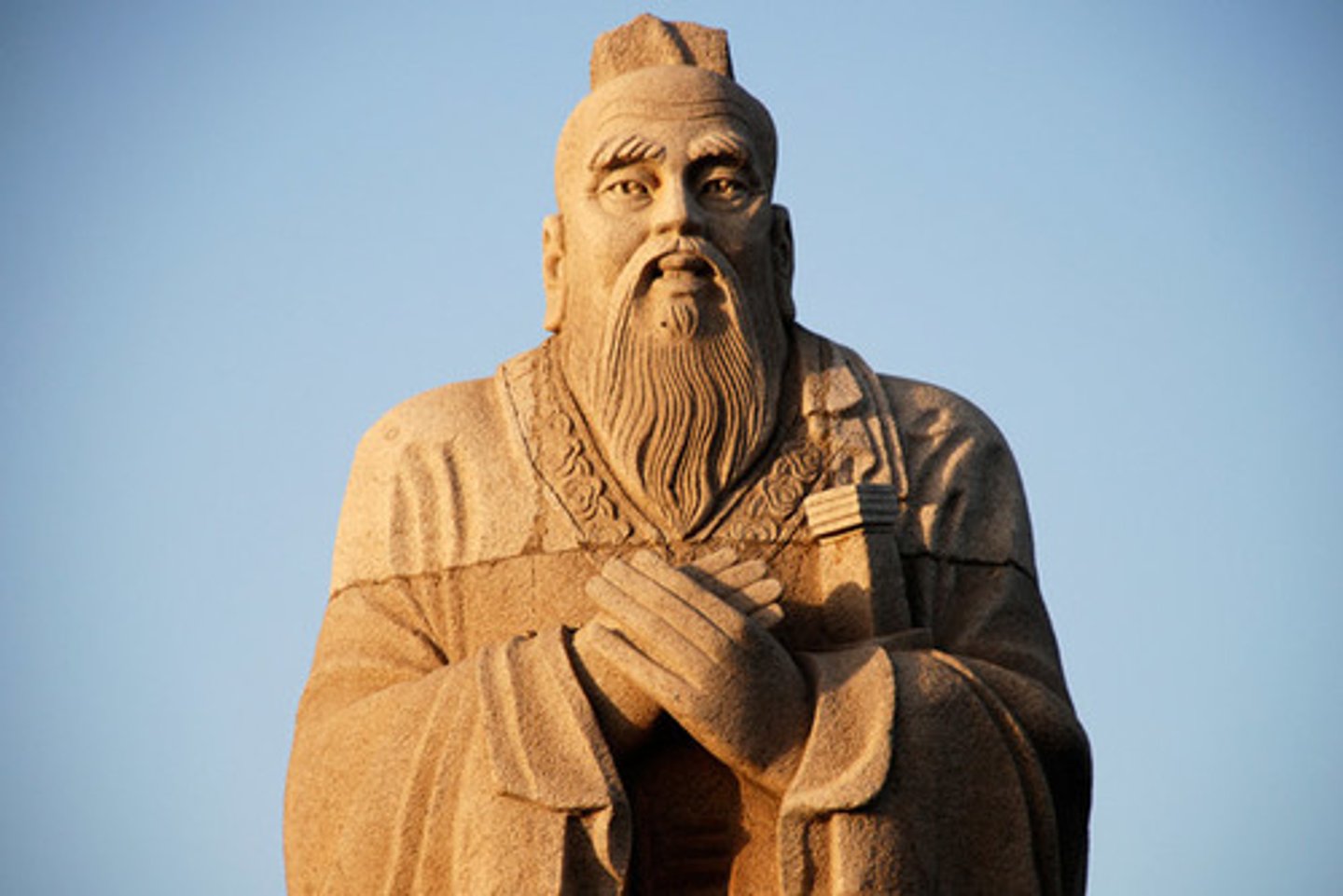
5. Li
-Confucianism is all about promoting social harmony (a society with strong relationships between the people) and provides rules for everyone to follow in their social relationships
-Called for individuals to behave appropriately or morally. You should show courtesy to everyone, especially elders.
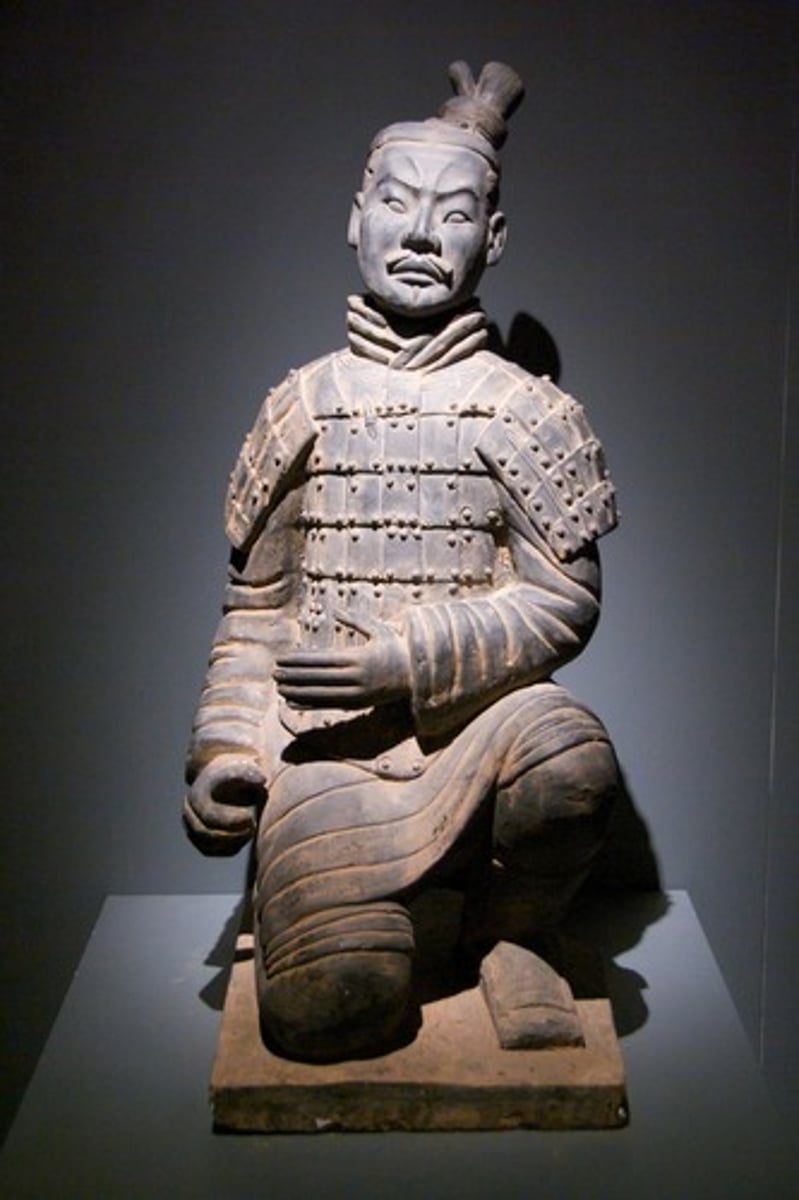
6. Filial Piety
-Confucianism is all about promoting social harmony (a society with strong relationships between the people) and provides rules for everyone to follow in their social relationships
-This concept is stressed in Confucianism. Above all else, honor your parents and your ancestors.
-In honoring your parents and ancestors, you should show obedience to your parents and your superiors.
-This is also demonstrated through acts of service to your parents and elders
-The Emperor was considered the father of the whole empire, so part of filial piety was showing respect and obedience to the emperor
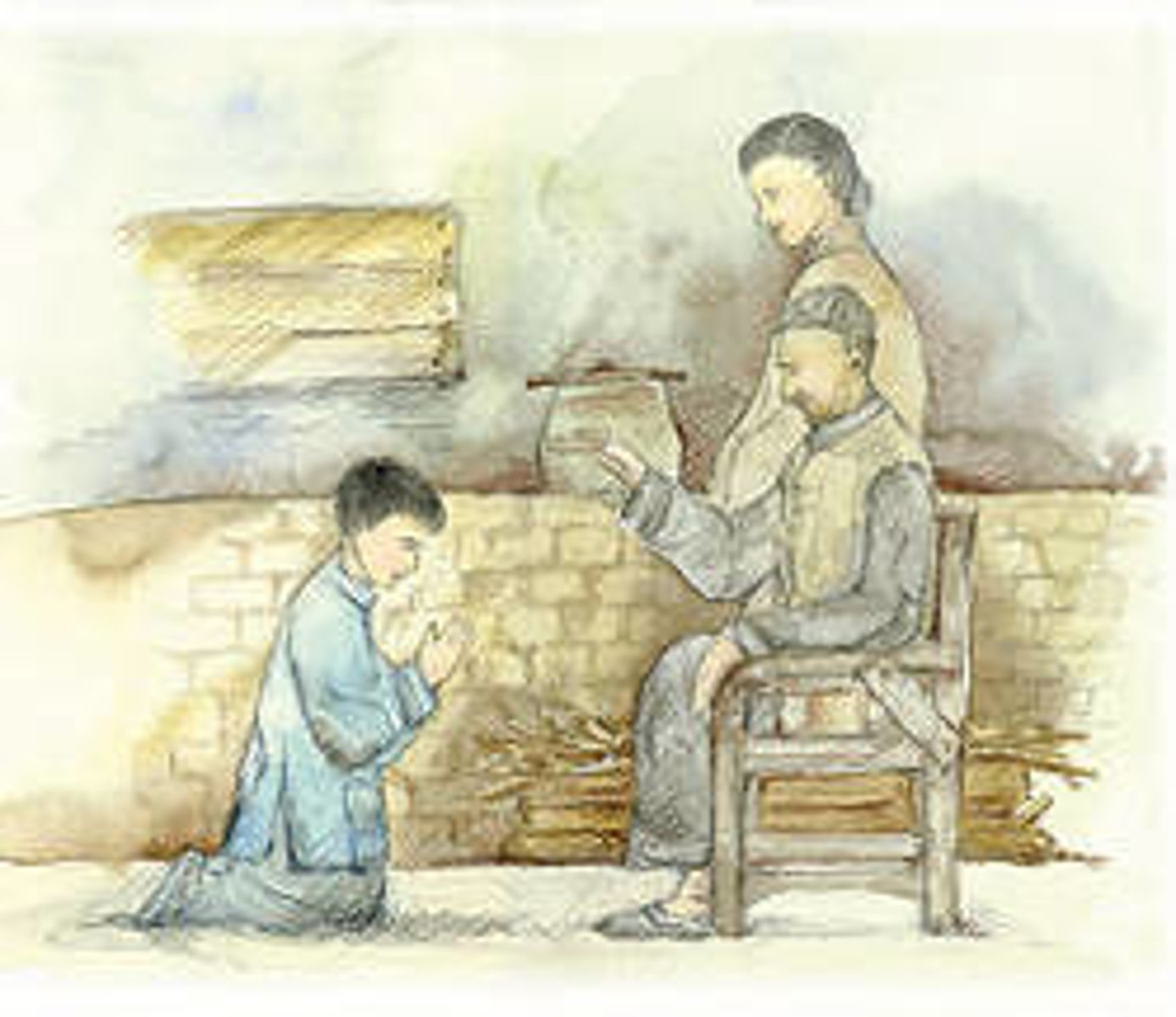
7. Spread of Buddhism
-This religion spread along the Silk Roads
-This was the most prominent (biggest) religion of merchants on the silk roads from 1200 CE to 1450 CE
-Four Noble Truths and Eightfold Path spread widely
-As the religion spread, it mixed with local religions and became a SYNCRETIC (mixed) religion, especially in Southeast Asia as it spread to the Khmer Empire and Angkor Wat
-Spread from India to China and became very popular in China, Japan, and Southeast Asia
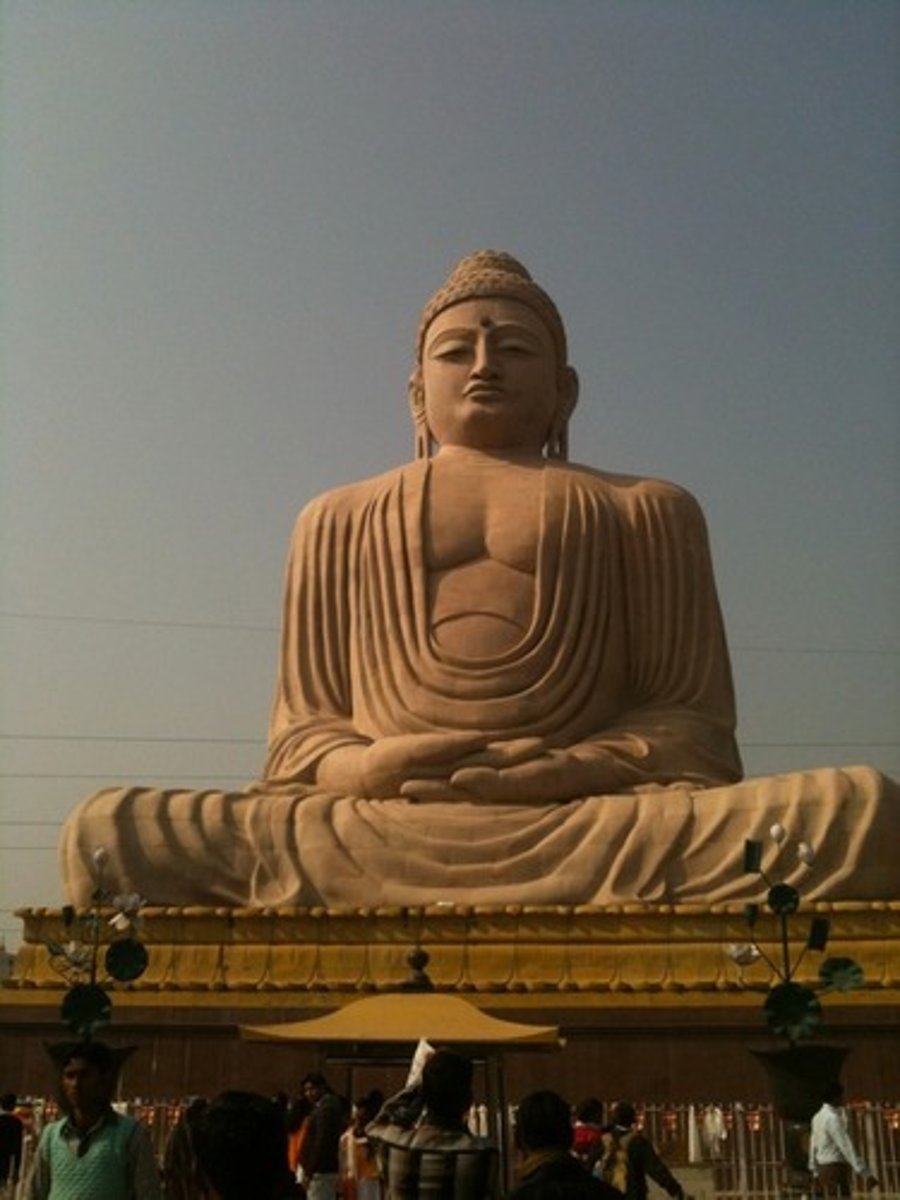
8. Spread of Hinduism 1200 CE to 1450 CE
-This religion spread with trade
-Started in India, and spread to Southeast Asia
-Did not spread to China and Japan as much
-Became popular in places like Vietnam; kings started to call themselves "Rajas" like in India and worship
-Worship of gods Shiva and Vishnu spread
-Mixed with local religions to make a SYNCRETIC religion (mixed religion), especially in Southeast Asia; the Khmer Empire in Angkor Wat became a syncretic mix of Hinduism and Buddhism
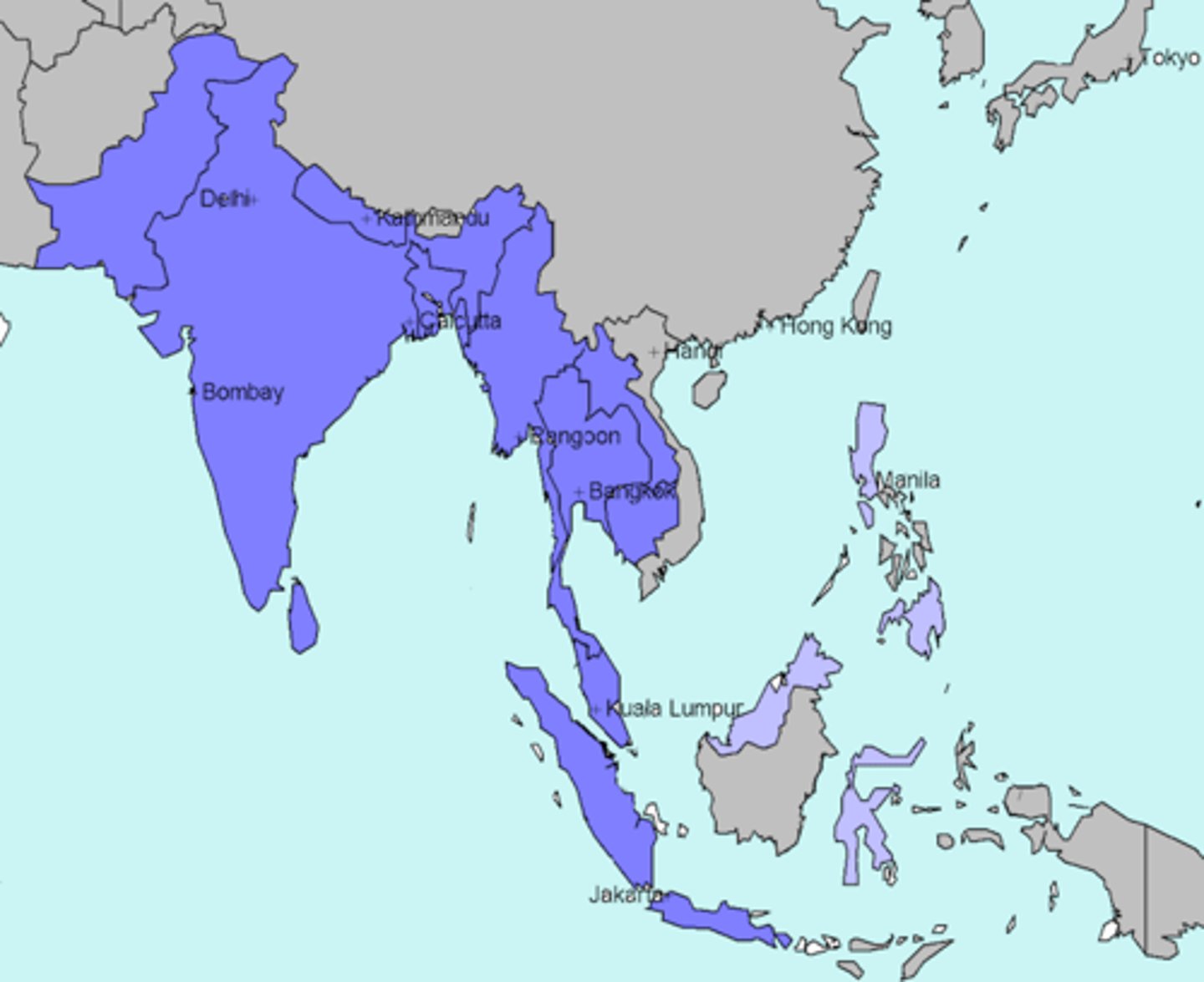
9. Cults of Shiva and Vishnu in Southeast (SE) Asia
-Two of the major Hindu Gods were Shiva and Vishnu. Shiva is known as The Destroyer, and is also known as the Supreme Lord who creates and protects
-Vishnu is "The Preserver." He also can be known as a god who creates and protects life.
-As Hinduism spread in SE Asia, in places like Vietnam people made cults to worship these gods
-A great example of these cults is in the Khmer Empire in Angkor Wat in present day Cambodia, in Southeast Asia
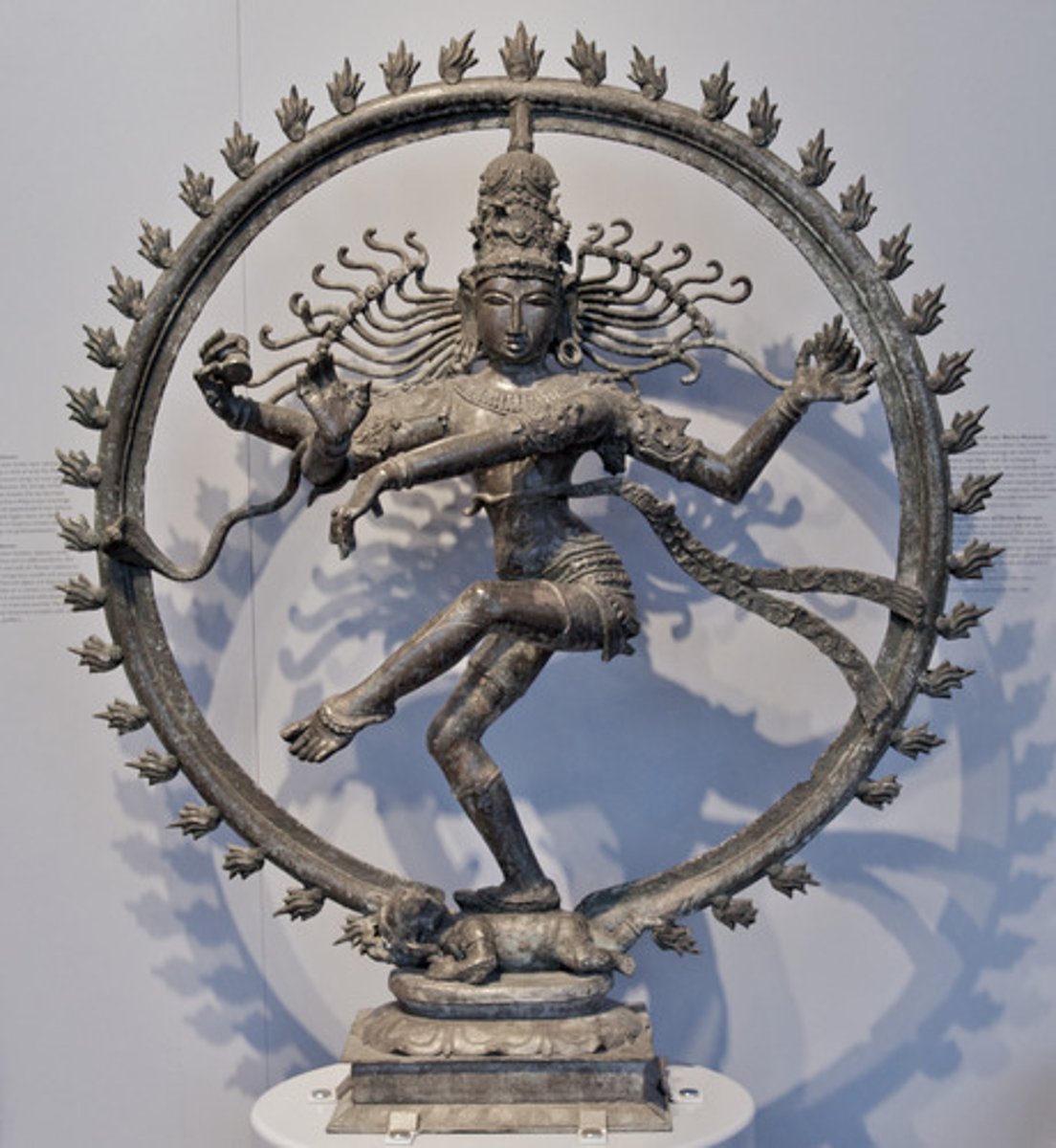
10. Spread of Eightfold Path and Four Noble Truths
-Core Ideas of Buddhism
-With trade, these ideas began to spread to China, Japan, and Southeast Asia, especially to the Khmer Empire in Angkor Wat
-Emphasize Buddhist Idea of living the "middle path." Live a life of moderation--don't go too far in any direction. Take the middle route!
-These ideas diffused throughout Eurasia as trade along the Silk Roads helped spread new ideas, technology, and culture
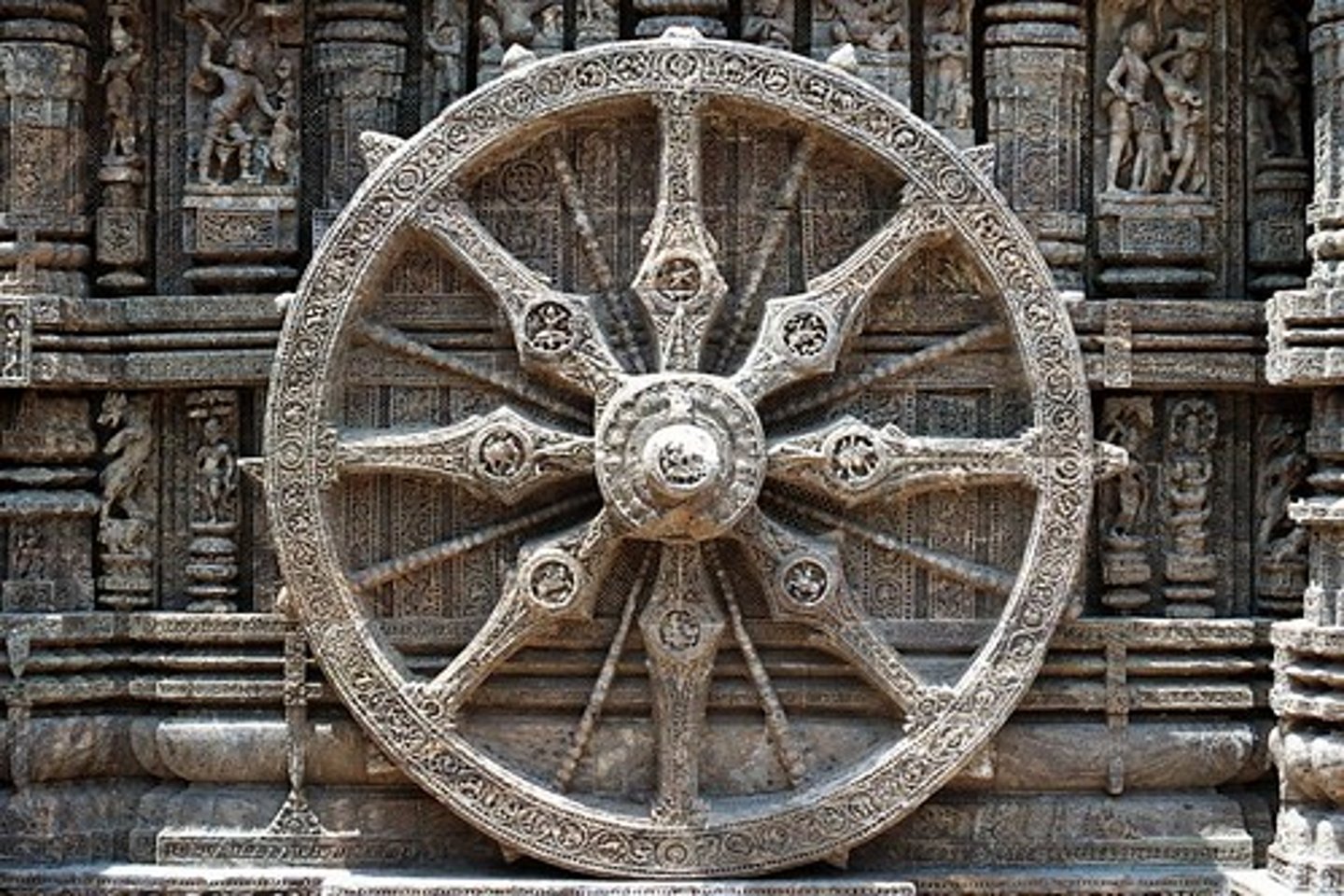
11. The European Crusades 1096 CE to 1487 CE
-As Islam began to rise, Islamic and Christian empires began to have conflict. Christianity began to spread into the Mediterranean at the same time as Islam was expanding. In 1096 CE, the Byzantine Emperor Alexios I requested help from the Christian Pope in Rome. He was worried about fighting of the Islamic threat
-Pope Urban II called for Christian military forces from Europe to invade the Middle East/SW Asia to help support Christianity, support the Byzantine Empire, and reclaim cities and sites important to Christianity
-For the next four hundred years, thousands of Christians from Western and Southern Europe traveled to the Middle East to fight against Islam for Christianity
-One of the major effects of the Crusades was obviously a huge increase in animosity (anger) between Christianity and Islam; some of this animosity still lingers today
-Another major effect was actually the transfer or exchange of technology and culture between Christianity and Islam.
-Christians learned new ideas about hygiene and science from the Muslims; they actually rediscovered ancient Greek texts that Muslim mathematicians and scientists had in their library;
-Christians also gained new techniques for agriculture and irrigation, along with secret glass-making techniques that they got from Syria
-Muslims learned new military tactics and strategies from the conflict with the European Christians
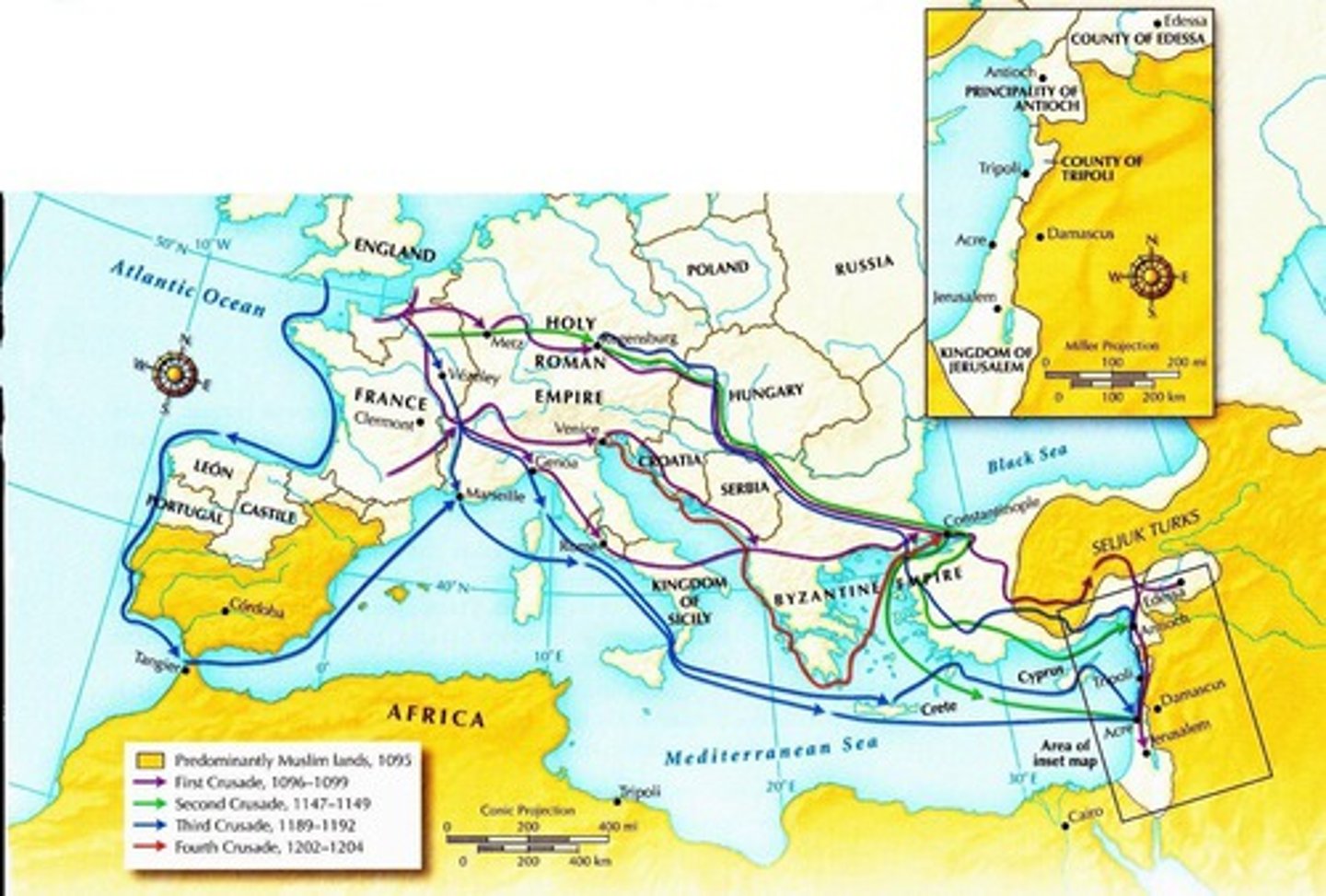
12. Technological and Cultural Transfers in the Crusades
-One of the major effects of the Crusades was the transfer or exchange of technology and culture between Christianity and Islam.
-Christians learned new ideas about hygiene and science from the Muslims; they actually rediscovered ancient Greek texts that Muslim mathematicians and scientists had in their library;
-Christians also gained new techniques for agriculture and irrigation, along with secret glass-making techniques that they got from Syria
-Christians also gained new techniques for architecture from Muslim science and architecture, that allowed them to build larger and grander monumental architecture
-Muslims learned new military tactics and strategies from the conflict with the European Christians
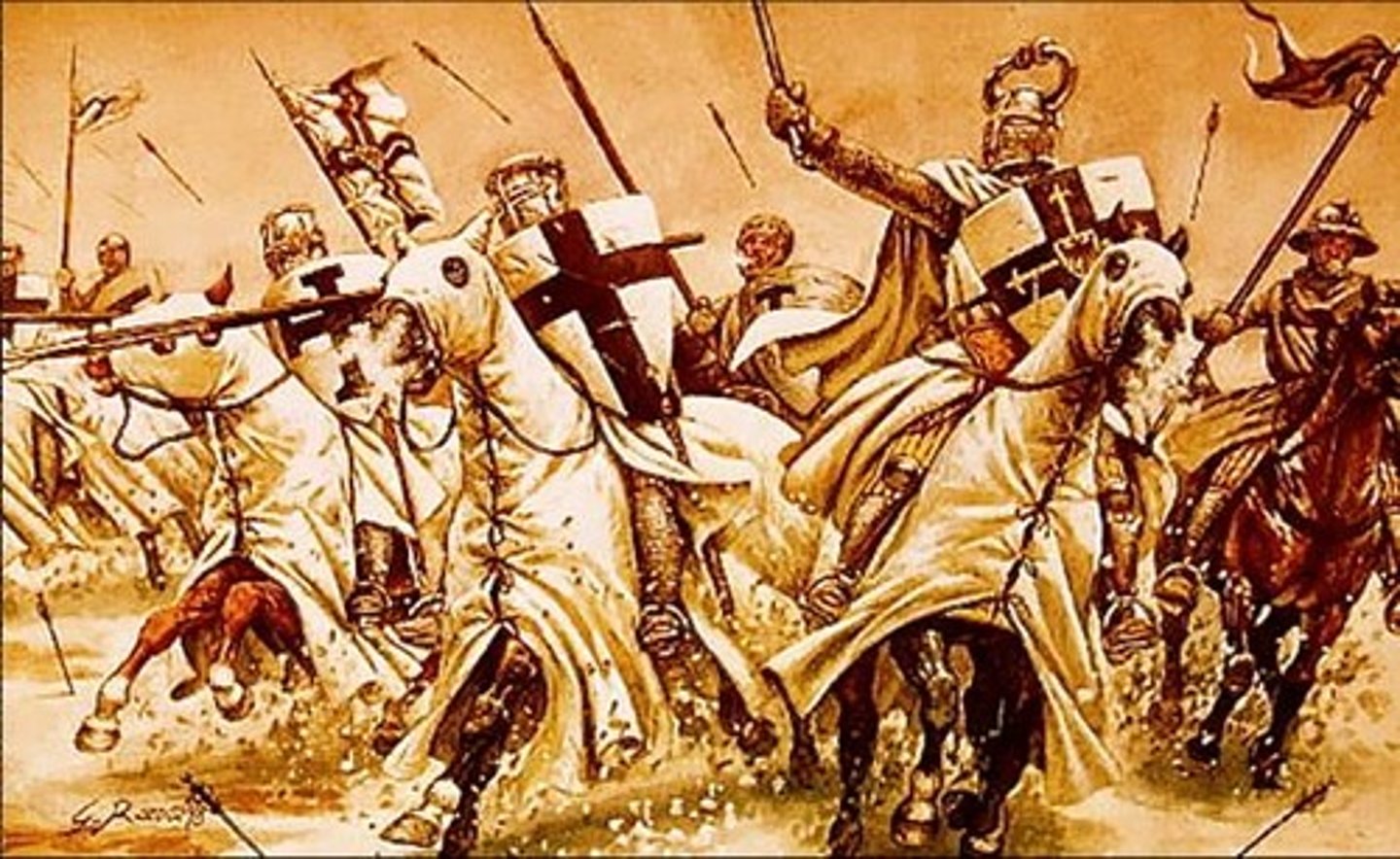
13. Chinese, Indian, and Persian Textiles and Porcelain (1200 CE to 1450 CE)
--During Era 1, 1200 CE to 1450 CE, there was tons of trade and travel going through Eurasia; the conquest of the Mongols also further increased trade and travel in Eurasia
-Textiles like silk, wool, and cotton cloths became incredibly popular, as did porcelain pottery from China
-As a result, three major areas began small "factories" to produce textiles and porcelain: China, Persia, and India
-In China, cities like Hangzhou and Chang'an became centers of industrial production of silk and porcelain, which where then exported (sent out) for trade along the silk roads
-In Persia, the Abbasid Caliphates made cities like Baghdad into centers for production of porcelain and also produced elaborate and beautiful carpet textiles that they would export (send out) in trade
-In India, the Delhi Sultanates also produced porcelain and silks that they would export through the Indian Ocean Basin and Silk Roads for trade
14. Increase in Urbanization in Era 1, 1200 CE to 1450 CE
-During Era 1, 1200 CE to 1450 CE, world population continued to increase as Agricultural techniques and seeds spread through trade and migration
-As population increased, urbanization also increased as cities grew immensely around the world.
-There were several reasons why cities increased in size and scope around the world. You need to memorize these reasons:
1--Increase in safe and reliable transport on horse, camel or sailing vessels
2--The rise of trade and cities serving as centers of trade
3--Warmer temperatures between 800 CE to 1300 CE led to increase in population
4--Increasing agriculture leads to specialization of labor
5--Use of coerced (forced) labor and slave labor to produce lots of food crops
Important trading cities to know: Constantinople (Middle East/Mediterranean), Chang'an (Song China), Hangzhou (Song China), Tenochtitlan (Aztecs), Timbuktu (Mali Africa), Baghdad (Abbasid Caliphate), London, Paris (Europe), Samarkand (Central Asia/Silk Roads), Karakorum (Central Asia/Mongols)
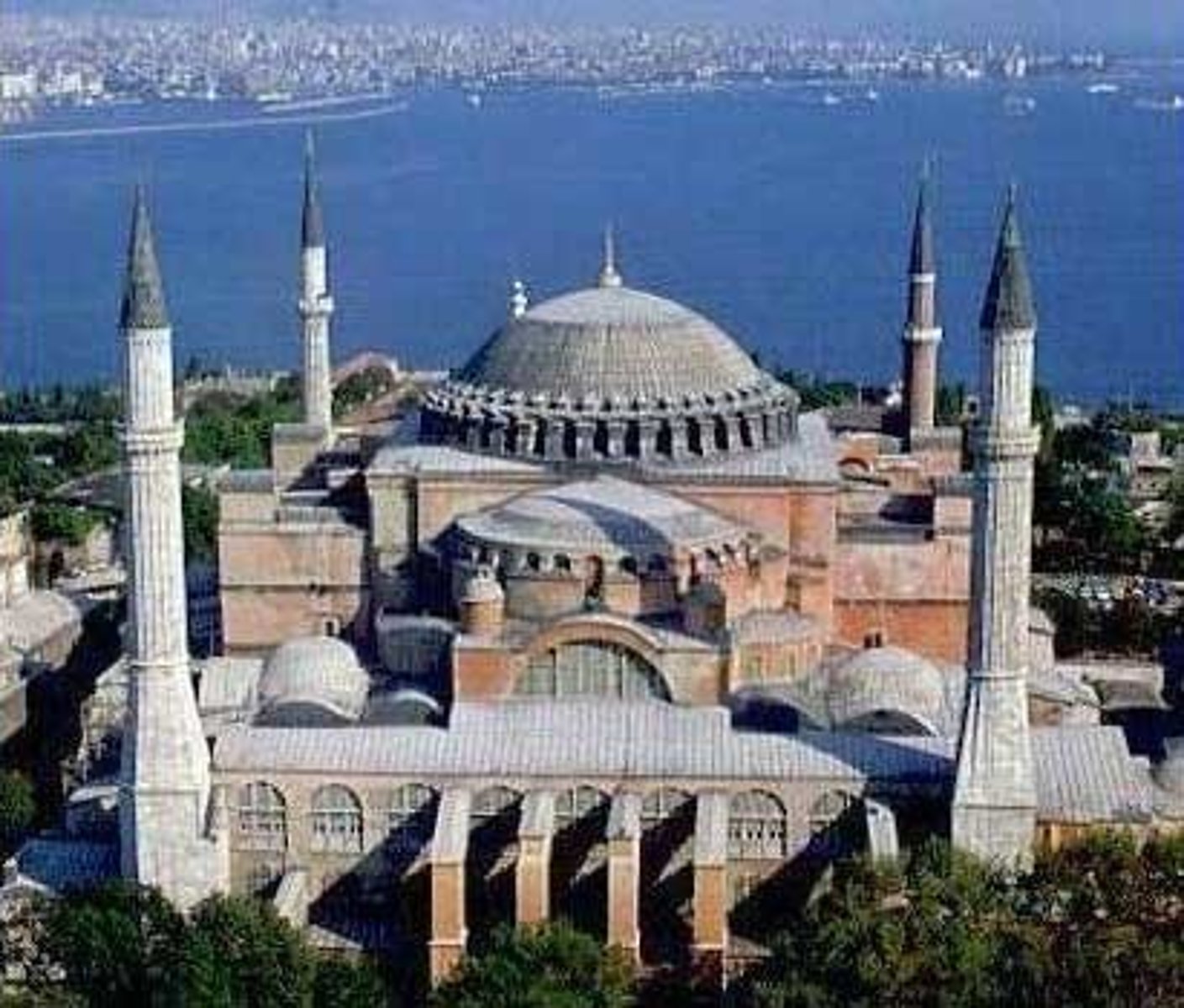
15. Decline of Some Urban Areas Era 1, 1200 CE to 1450 CE
-During Era 1, 1200 CE to 1450 CE, world population continued to increase as Agriculture spread through trade and migration
-Many cities grew immensely in size and scope; however, some urban areas declined in this time period and some cities had huge population losses
-There were several reasons why some cities declined, and you need to memorize them. The reasons why some cities declined were:
1--Invasions from people like the Mongols
2--Diseases like the Black Plague
3--The Little Ice Age went from 1300 CE to 1850 CE and led to a decrease in agriculture in some places
16. Diffusion of Islamic Literature and Culture (1200 CE to 1450 CE)
-Throughout Era 1, 1200 CE to 1450 CE, Islam spread through war, trade through merchants, and through missionaries like Sufi Mystics
-Islam spread across the Sahara desert into Sub-Saharan Africa and as far as Southeast Asia (Thailand, Cambodia, Vietnam)
-Islamic and Arabic literature also spread with the religion. Books like "The Arabian Nights" and religious texts like the Quran and the Hadith also spread to these places
-Islamic culture and laws, sharia law, also spread to the areas in Sub-Saharan Africa that adopted Islam. Sharia law strictly governed society, forbidding adultery, theft, murder etc.
-As Islamic culture spread, demand for Islamic scholars (ulama) and judges (qadi) also rose. This is how Ibn Battuta was able to travel and get work in so many places!
-Sharia law had been influenced by Persian history and had the "eye for an eye" influence from ancient Mesopotamia and Hammurabi's Code
17. Italian City-States 1200 CE to 1450 CE
-In Era 1, 1200 CE to 1450 CE there were some new political forms of governance that arose. In the Middle East/SW Asia, the Caliphate was a new way of governing
-Another political structure that became popular was the city-state. They city-state had been used in ancient Mesopotomia and was used by the Mayans and Greeks
-In a city-state, there is one major city that forms the center of the state. The surrounding territory is used for agriculture; the city serves as a center for trade and uses the military to protect the surrounding area
-from 1200 CE to 1450 CE, Italy was no longer under the Roman Empire. Italy divided into powerful city-states that were known especially for their merchants and trading in the Mediterranean Sea routes.
-The most powerful Italian city-states were Venice, Milan, and Florence
-Italy would remain divided into city-states until the 1800's, when the rising tide of nationalism would lead to the unification of Italy under Cavour and Garibaldi
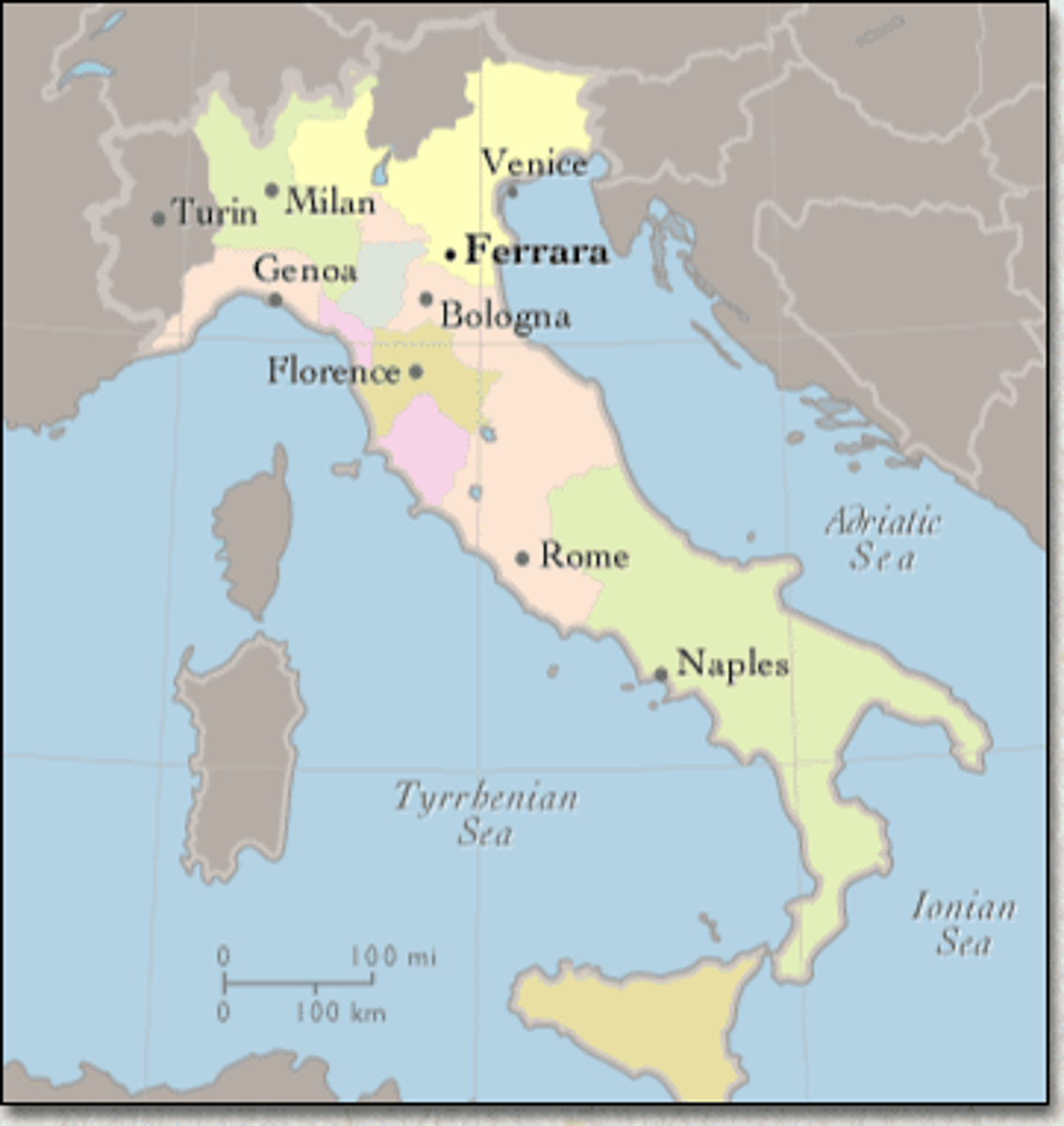
18. DECENTRALIZED European and Japanese Feudalism Era 1, 1200 to 1450 CE
-During Era 1, 1200 to 1450 CE, much of Europe and Japan was decentralized
-Being decentralized meant that there were not many strong, central rulers that were ruling from capital cities; Europe and Japan were divided up in to small areas that were ruled by local lords
-Feudalism was the name of the social structure of the time. Even though it was decentralized, there were still some weak Rulers. The Rulers would grant land to to the Nobles/Daimyo (Japanese lords), who lived on large estates called a Shoen (Japan) or Manors (Manor is the actual large house)
-So this overall system, which is similar to serfdom, was called feudalism and manorialism. It's also important to remember that both Europe and Japan were DECENTRALIZED in Era 1, 1200 to 1450 CE, without huge empires or too much central authority
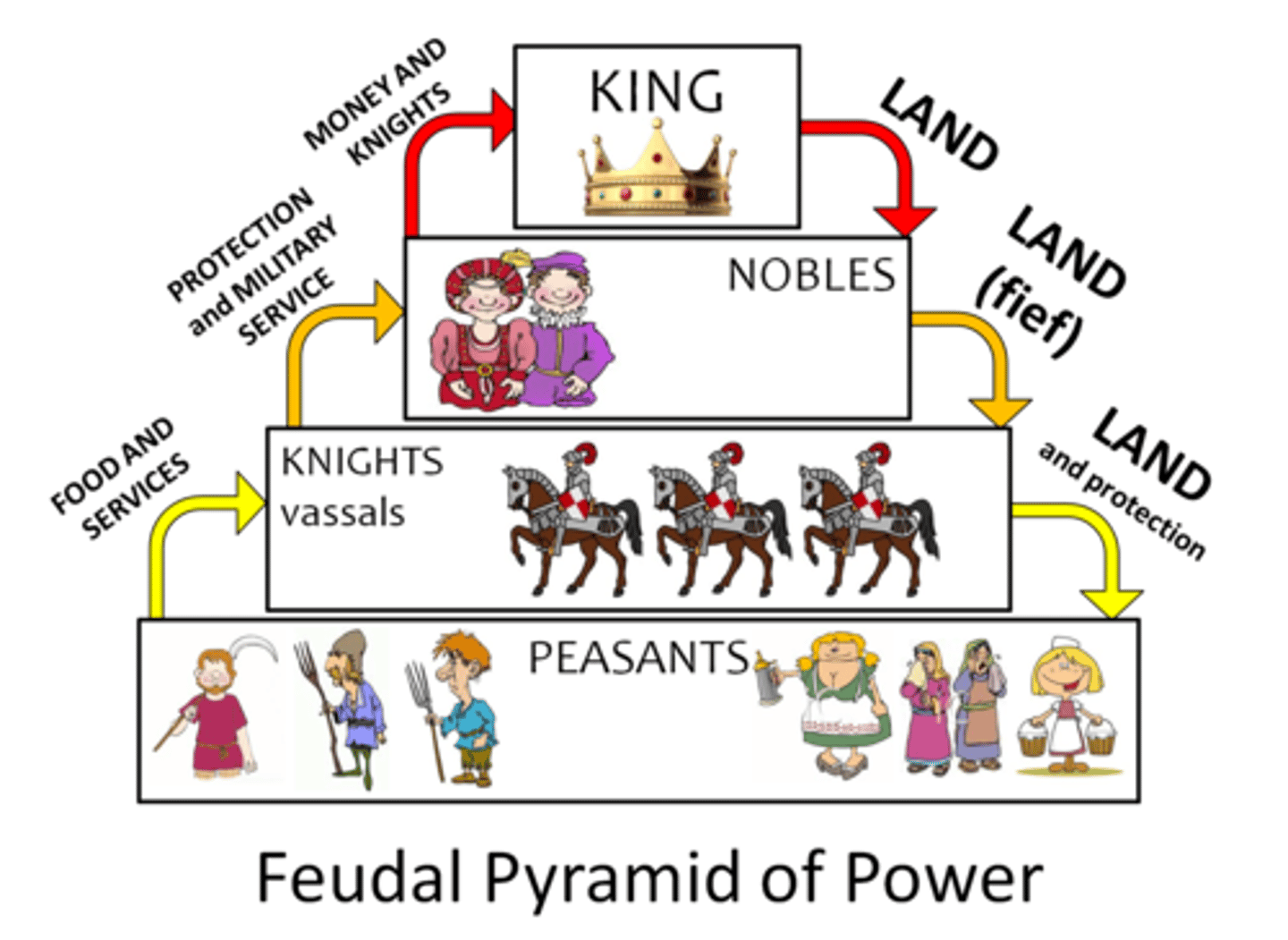
19. Feudalism in Europe and Japan , 1200 - 1450 CE
-Feudalism was the name of the social structure of the time in Europe and Japan. Even though it was decentralized, there were still some weak Rulers. The Rulers would grant land to to the Daimyo (Japanese lords)/ Nobles, who lived on large estates called a Shoen (Japan) or Manors (Manor is the actual large house)
- Nobles lived on the land and owned large pieces of land and usually lived in a large house or castle called a SHOEN (Japan) or MANOR (Europe)
-Below the Daimyo/Nobles were Knights/Samurai--who were a wealthier military class; the weapons and armor of Knights/Samurai were very expensive, thus most of this class was well off. They were required to give military service to their lord, and lived near to the shoen/manor
-The peasants or serfs were tenants on the lord's land and were below the knights/samurai. They had to pay the lord rent in the form of crops or labor. The lord and samurai/Knights would provide them with protection from invaders or barbarians
-The peasants or serfs also had to serve in his military force whenever they were required to do so; the lord was supposed to provide Military protection for all those sworn to him, protecting from invasion by people like the Vikings or Visigoths or Mongols in Japan
-In some cases, the nobility formed the warrior class of Knights and samurai, and the poorer peasants were not required to fight, but just had to provide labor, goods, and other services
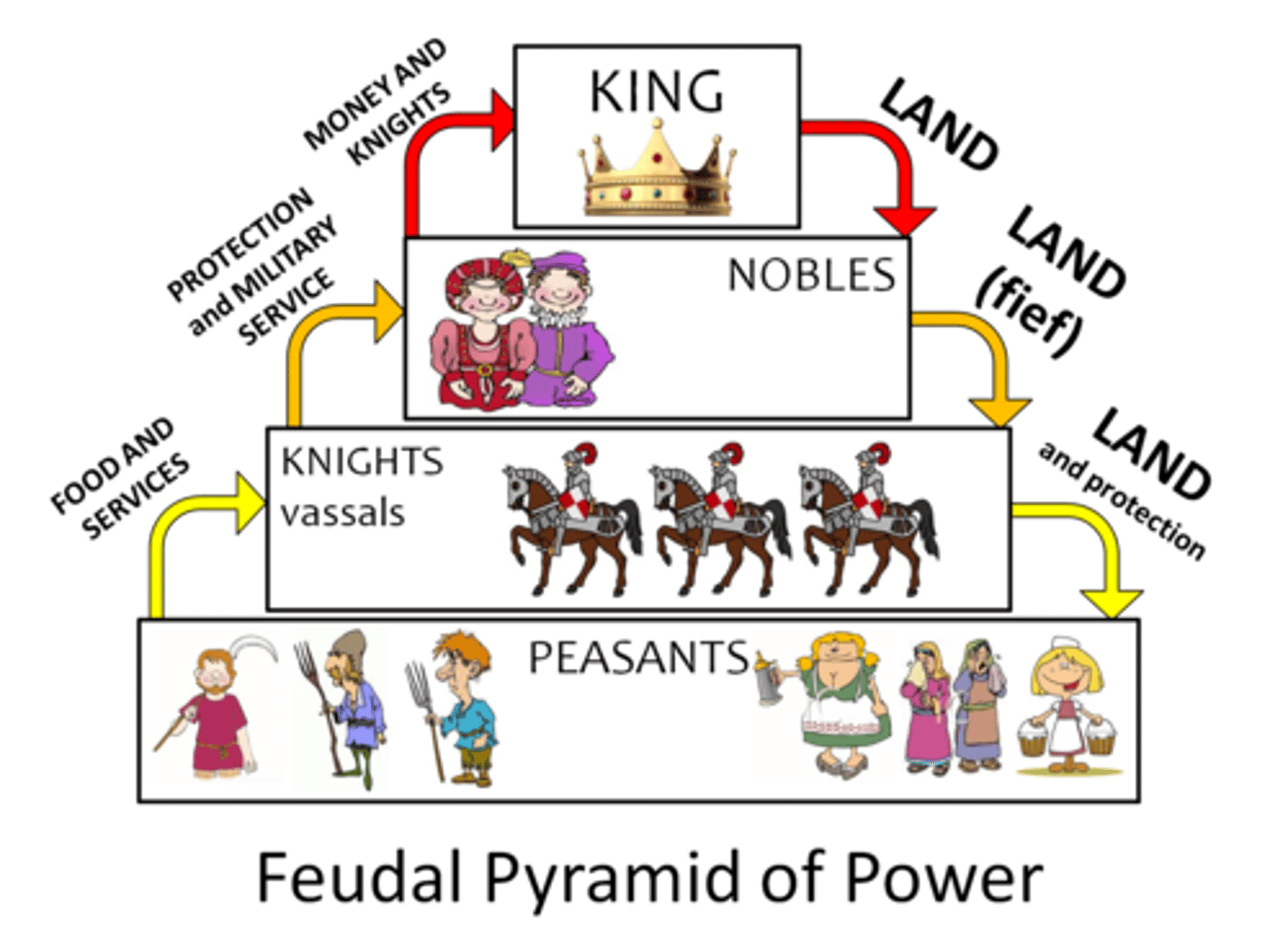
20. Social Structure in European /Japanese Feudalism, (1200 CE to 1450 CE)
-Feudalism--decentralized, so the Kings and capital cities didn't have much power
Social Structure was:
-Kings/Rulers at the top, gave land to the Daimyo/nobles, who lived in a SHOEN/ MANOR
-Daimyo/Nobles owned land, had people sworn to them like Samurai/Knights and Serfs
-Knights/Samurai were a rich military class below the nobles; sworn to fight for nobles
-Peasants/serfs were tenants who rented the land from the daimyo/nobles; were required to pay rent in the form of food or military service when required
-In return, the nobles/knights who lived in the manors provided military protection from outside invaders and barbarians, like the Vikings or Visigoths
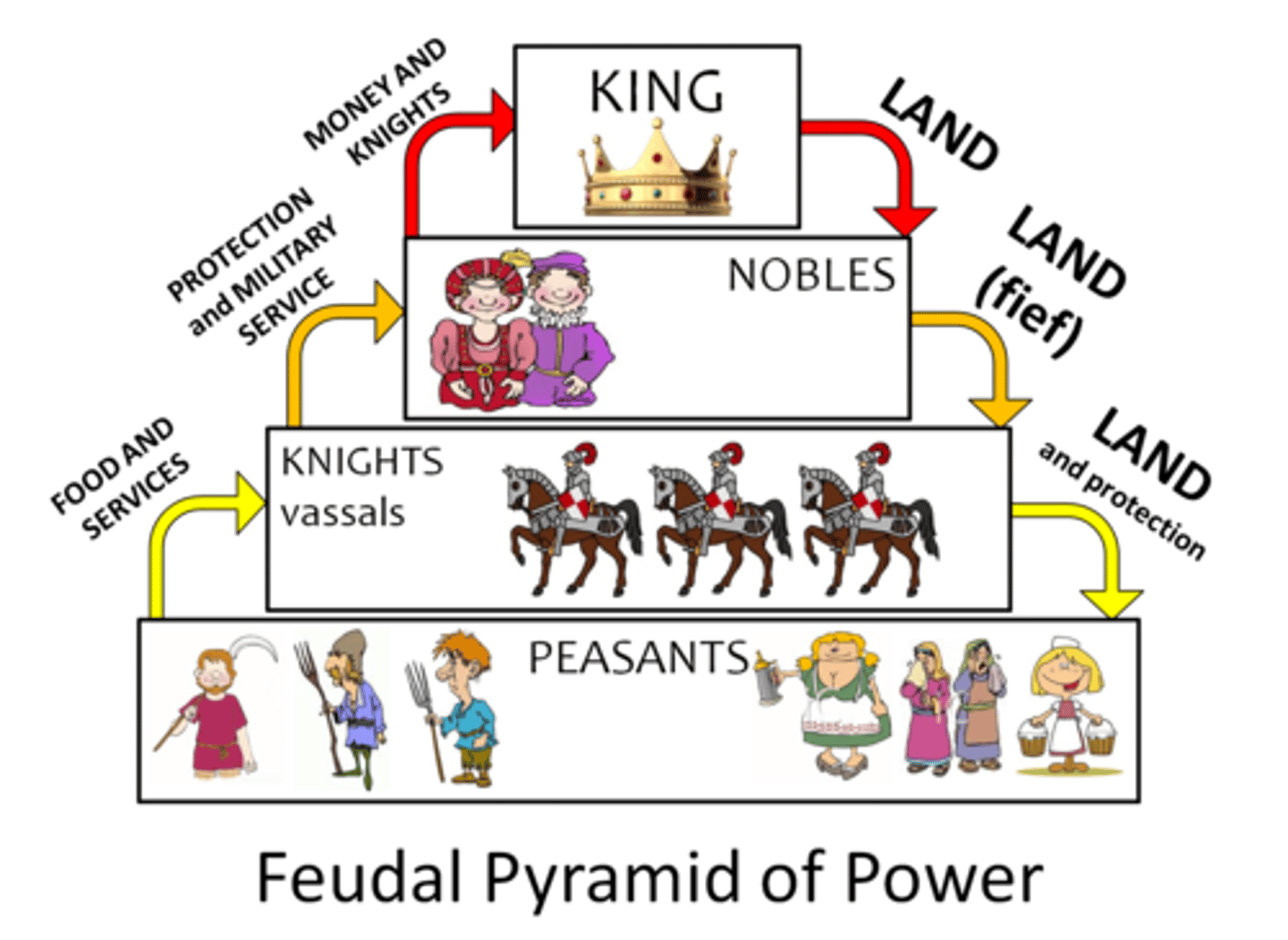
21. Serfdom
-This was a form of forced or coerced labor
-Serfs were not enslaved persons [slaves], but were tied to the land they lived on and were deprived of many rights that the upper classes had.
-You couldn't be bought and sold, but your family would inherit your debt/obligation to the lord in the manor. You could not just leave the land whenever you wanted
-But you lived on the daimyo/lord's land and you had to work for him throughout the year; over half your time was spent working for the lord in the manor
-You couldn't marry freely or leave the land freely; so you had very few rights
-So basically you were living on the daimyo/lord's land and you had to do a lot of stuff for him, and you needed his permission to pretty much do anything.
-In return, the Daimyo/Lord and his Samurai/Knights were supposed to protect you from Barbarian invaders like the Visigoths, Vikings, or Mongols
-This was the most popular type of coerced labor in Europe from 1200 to 1450 CE and was a part of Feudalism
-Serfs were the lowest class in Feudalism
![<p>-This was a form of forced or coerced labor</p><p>-Serfs were not enslaved persons [slaves], but were tied to the land they lived on and were deprived of many rights that the upper classes had.</p><p>-You couldn't be bought and sold, but your family would inherit your debt/obligation to the lord in the manor. You could not just leave the land whenever you wanted</p><p>-But you lived on the daimyo/lord's land and you had to work for him throughout the year; over half your time was spent working for the lord in the manor</p><p>-You couldn't marry freely or leave the land freely; so you had very few rights</p><p>-So basically you were living on the daimyo/lord's land and you had to do a lot of stuff for him, and you needed his permission to pretty much do anything. </p><p>-In return, the Daimyo/Lord and his Samurai/Knights were supposed to protect you from Barbarian invaders like the Visigoths, Vikings, or Mongols</p><p>-This was the most popular type of coerced labor in Europe from 1200 to 1450 CE and was a part of Feudalism</p><p>-Serfs were the lowest class in Feudalism</p>](https://knowt-user-attachments.s3.amazonaws.com/606cd47d-2514-4189-b463-146c428d9cd2.jpg)
22. Samurai Class
-Legendary Japanese warriors who were a social class that was part of Japanese feudal structure
-They were an upper social class and were sworn to fight for and protect local Japanese daimyo (nobles)
-Included lifelong training in the way of the warrior
-Followed the Bushido Code of honor, which demanded respect, loyalty, high pain tolerance, honor, and dedication to victory
-Wielded the legendary Kitana sword to great effect
-Wore plated armor in defense
-Could commit suicide out of shame if they lost a major battle rather than live with the shame of defeat
-With the aid of storms, the samurai, despite being outnumbered, defeated two separate Mongol Invasions
-Tokugawa Ieyasu was a legendary samurai warrior who started the Tokugawa Shogunate
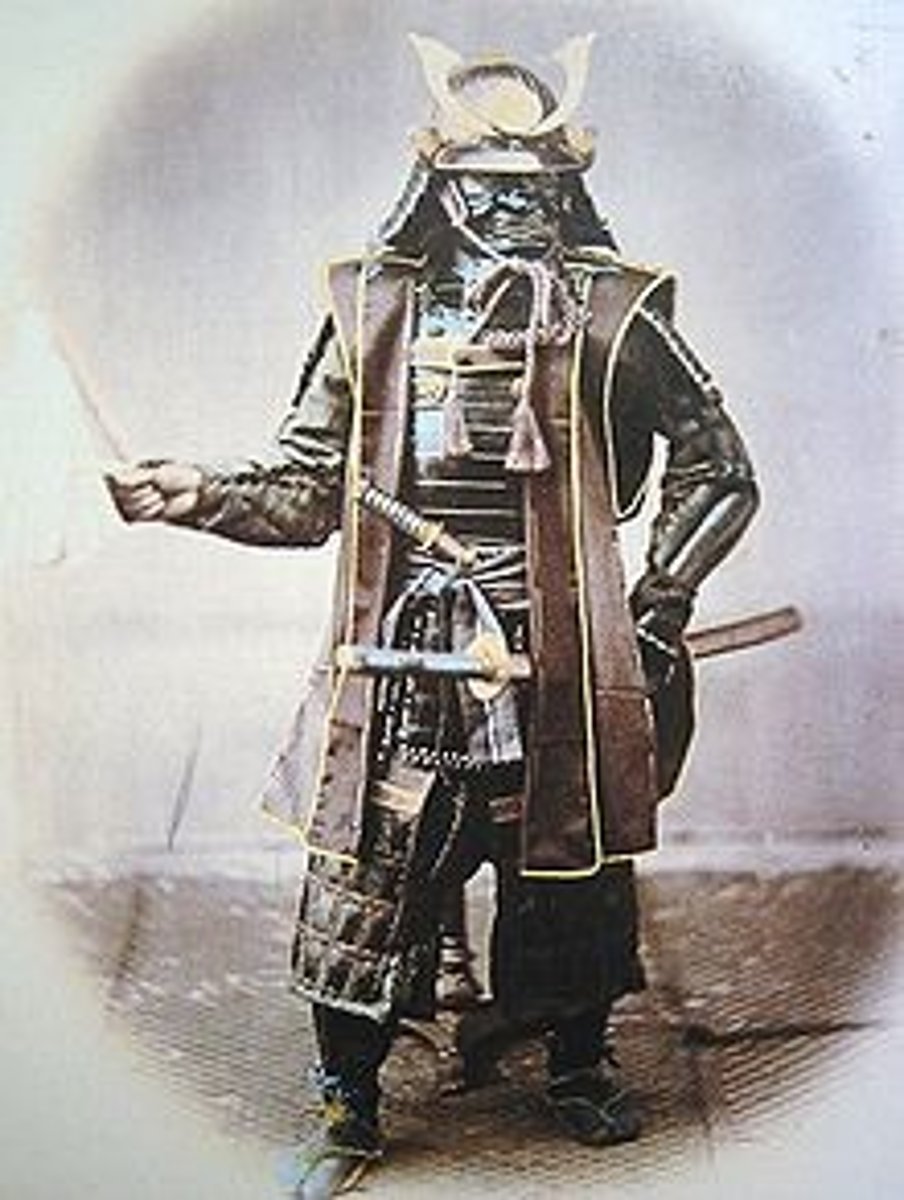
23. Tsukahara Bokuden (1489-1571)
-Legendary Japanese Samurai of the warring states period, one of the most skilled and feared warriors of all-time
-Fought in 19 duels and 37 battles and was never defeated in individual combat. Many of these duels could be to the death. Legend claims that he was only wounded seriously 6 times, all by arrow
-It is estimated that he killed over 212 enemies in his role as a samurai
-founder of a new Kashima style of kenjutsu (Japanese sword fighting)
-was an orphan and learned to fight from his adopted father
-Depicted in movies and TV, considered one of the greatest samurai of all-time
24. European Feudal Economy, Era 1: 1200 CE to 1450 CE
-During Era 1, 1200 to 1450 CE, Europe was decentralized (no big empires, no big powerful capital cities)
-Europe was a Feudal society organized around large Manors, houses where Lords lived
-The Lords lived in the large Manor house, and beneath them were knights and Serfs
-The Knights provided protection from outside invaders and barbarians like the Visigoths, Vikings, or Mongols
-The serfs worked the land and owed money and military service to the lord in the manor
-Europe was almost entirely an agricultural society at this time, using the Open Field System
-Crops grown included wheat, olive oil, grapes for eating and wine,
-Trade in silk, porcelain, and spices came from the Silk Roads from the Song Dynasty, with merchants like Marco Polo bringing the goods back
-Porcelain, spices, gold, ivory, textiles, diamonds, salt, etc came from the Silk Roads, Trans Saharan caravan routes and were carried by merchants
-Merchants also carried diseases, technology, ideas, and religions with them
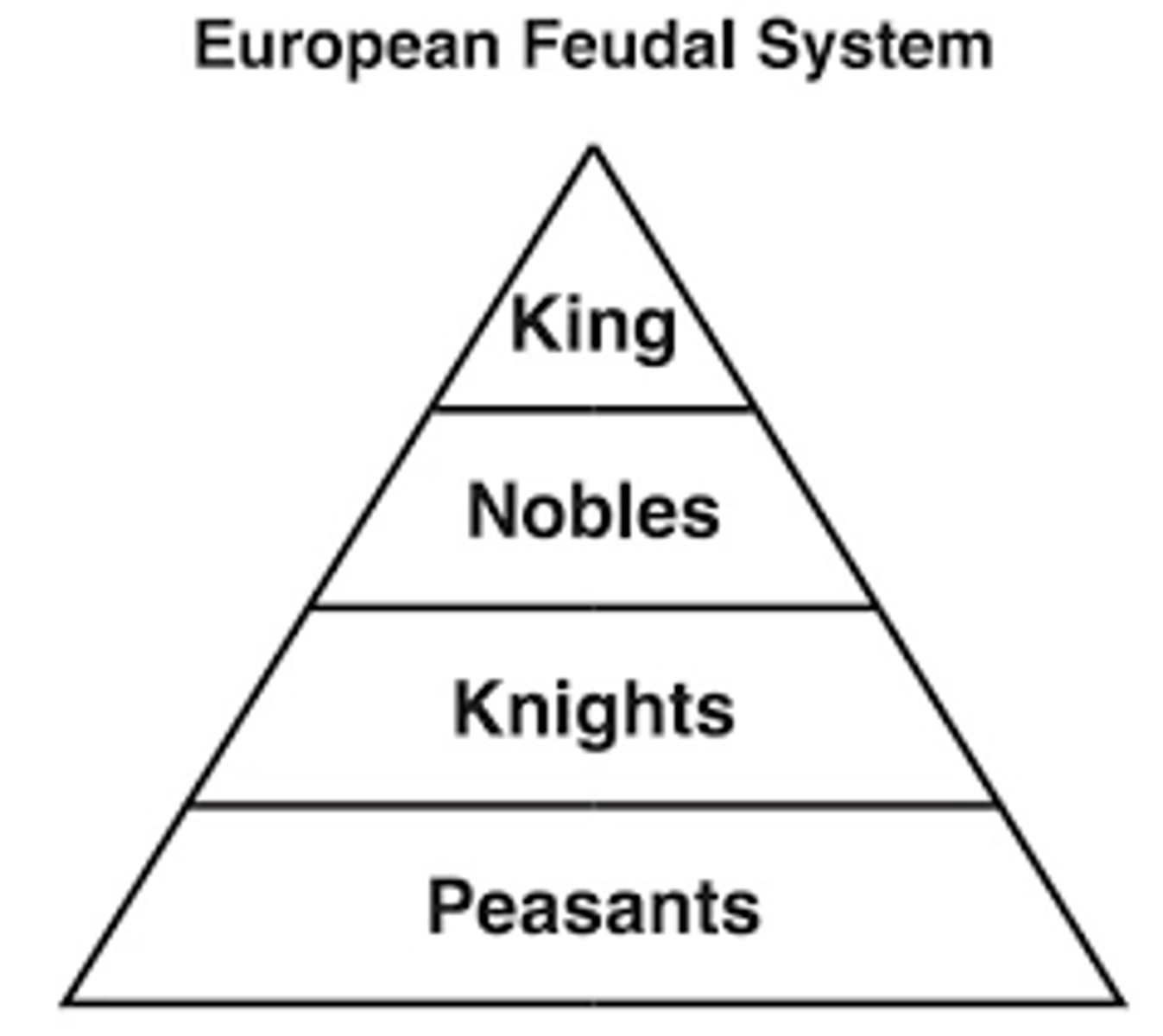
25. Open Field System in Feudal Europe
-Open Field System: during feudalism, there was the Manor System
-The Manor was the large house or castle where the local noble and knights lived; outside of the manor house would be two or three large fields divided into strips, worked by the serfs
-peasant tenant farmers, often known as serfs, would be assigned a strip and a crop. They would owe a certain amount of the crop to the lord in return for protection from barbarians, such as the Visigoths, Vikings, or Mongols
-Critical part of the agricultural European economy and feudalism from 1200 CE to 1450 CE
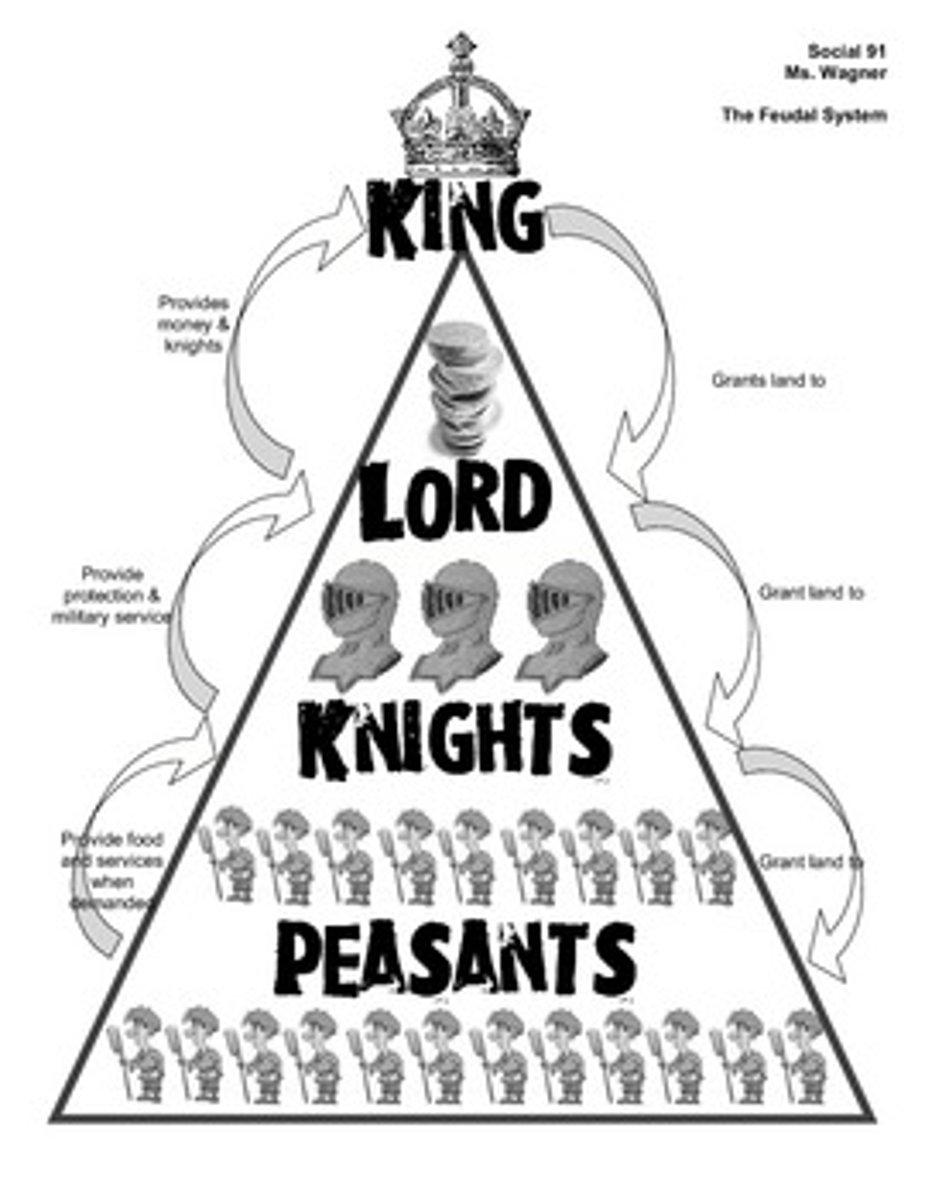
26. The Manorial System
-Feudalism--decentralized, so the Kings and capital cities didn't have much power
Social Structure was:
-Kings at the top, gave land to the nobles, who lived in MANORS
-Nobles owned land, had people sworn to them like Knights and Serfs
-Knights/Samurai were a rich military class below the nobles; sworn to fight for nobles
-Peasants/serfs were tenants who rented the land from the nobles; were required to pay rent in the form of food or military service when required
-In return, the nobles/knights who lived in the manors provided military protection from outside invaders and barbarians, like the Vikings or Visigoths
-This whole system was called Feudalism and the Manorial System. The manor was the center of the village often, with the lord living in the large house. Serfs and the knights lived nearby
-The manor could provide services like a mill, blacksmith, medical care, and the lord could give out legal judgments and settle disputes
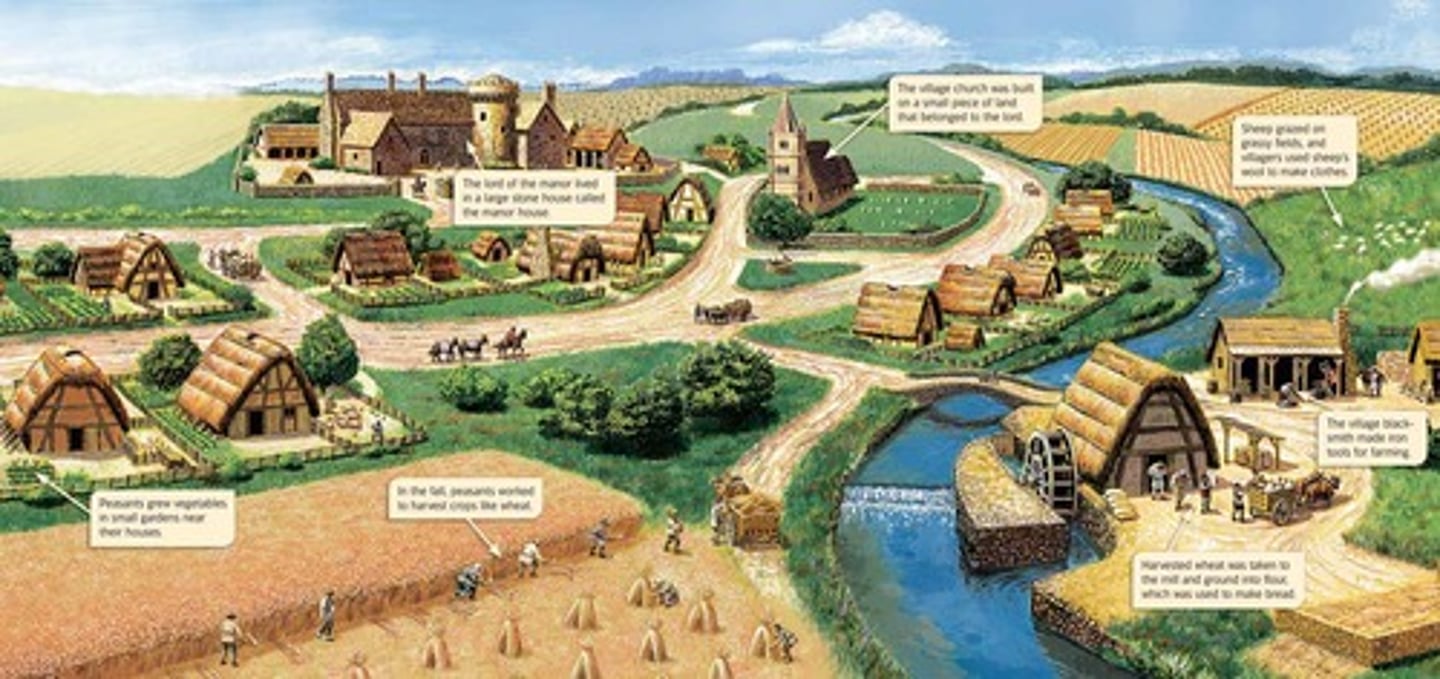
27. 1200 CE to 1900 CE
-Dates for huge amount of coerced or forced labor around the world with the rise of agriculture
-by 1900 CE, most forms of coerced labor had been abolished [taken away], although it still lingered in some places
![<p>-Dates for huge amount of coerced or forced labor around the world with the rise of agriculture</p><p>-by 1900 CE, most forms of coerced labor had been abolished [taken away], although it still lingered in some places</p>](https://knowt-user-attachments.s3.amazonaws.com/e3c36029-918e-40d8-a54e-ddc12f269ba4.jpg)
28. Forms of Coerced Labor, 1200 CE to 1914 CE (DATES REQUIRED)
-As agriculture began to spread, there was an even bigger increase in coerced [forced] labor as the elite classes did not want to work in agriculture or work in construction building large things. Starting in 1200 CE, these forms abounded [grew]. They mostly ended by 1914 CE
-Chattel slavery (the slavery you know the most about probably--the Americas, Eurasia)
-Serfdom--Japan and Russia, Western Europe 1200 onwards--tied to the land, owe the lord service
-Indentured Servitude--Americas, Europe--an unpaid servant for a period of time, usually 5 to 7 years
-Mit'a System--The Incan Empire; Spanish Empire in South America--forced labor, 1/7th of a town selected
-Encomienda System Spanish Empire in South America; forced labor on Spanish estates, high death rates
-Hacienda System; Spanish Empire in South America; forced labor on Spanish estates, high death rates
-Most of these forms of coerced labor died out in Era 3, 1750 - 1900 CE, as the effects of the Enlightenment spread around the world. However, there was still forced labor in many European colonies and there is still child labor and other unfair practices around the world today.
DATES REQUIRED FOR FULL CREDIT
![<p>-As agriculture began to spread, there was an even bigger increase in coerced [forced] labor as the elite classes did not want to work in agriculture or work in construction building large things. Starting in 1200 CE, these forms abounded [grew]. They mostly ended by 1914 CE</p><p>-Chattel slavery (the slavery you know the most about probably--the Americas, Eurasia)</p><p>-Serfdom--Japan and Russia, Western Europe 1200 onwards--tied to the land, owe the lord service</p><p>-Indentured Servitude--Americas, Europe--an unpaid servant for a period of time, usually 5 to 7 years</p><p>-Mit'a System--The Incan Empire; Spanish Empire in South America--forced labor, 1/7th of a town selected</p><p>-Encomienda System Spanish Empire in South America; forced labor on Spanish estates, high death rates</p><p>-Hacienda System; Spanish Empire in South America; forced labor on Spanish estates, high death rates</p><p>-Most of these forms of coerced labor died out in Era 3, 1750 - 1900 CE, as the effects of the Enlightenment spread around the world. However, there was still forced labor in many European colonies and there is still child labor and other unfair practices around the world today.</p><p>DATES REQUIRED FOR FULL CREDIT</p>](https://knowt-user-attachments.s3.amazonaws.com/548aa146-2fe8-492f-adeb-2686af317bdb.jpg)